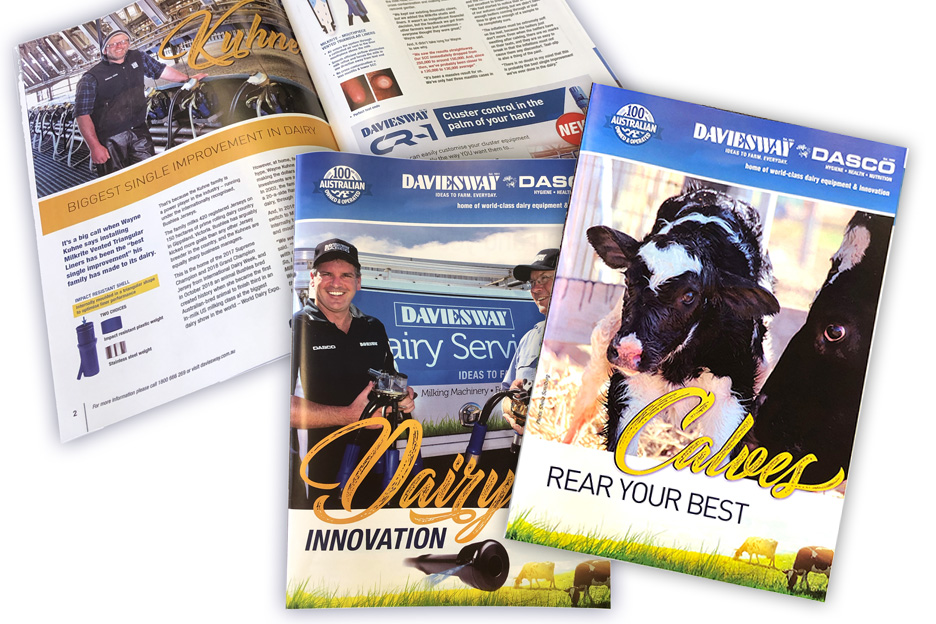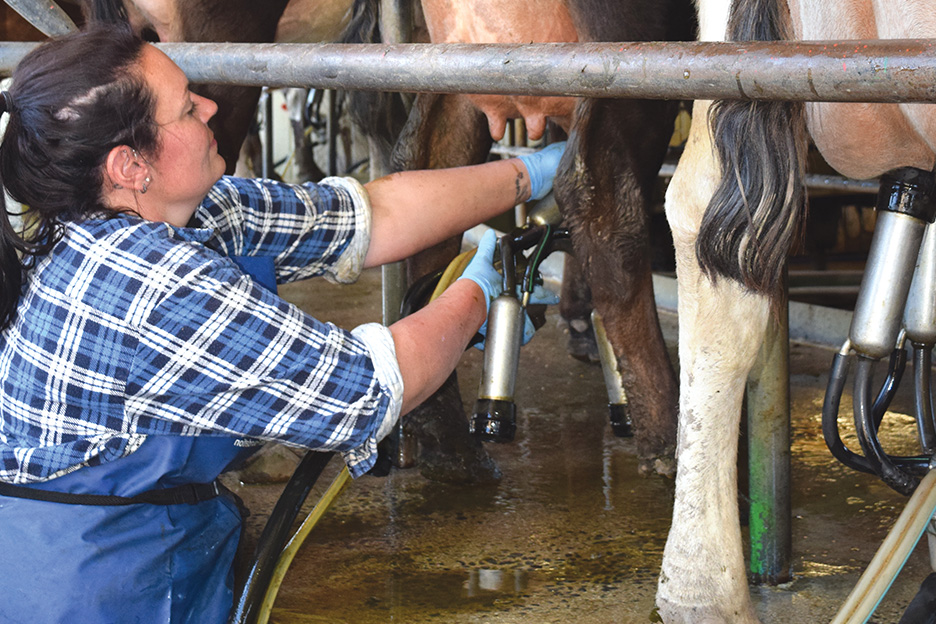
The hidden cost of skipping annual shed checks can be a false economy.
While the tough season has understandably made everyone tighten their belts – DASCO’s Paul Hurst says routine shed tests expose the triggers that threaten teat hygiene and health.
Compromised teat hygiene is a short step away from teat-end damage, rising somatic cell counts (SCC), temperament issues and more manure in the dairy as a result of teat discomfort.
"Skipping that annual shed test can often come down to a lot of farmers trying to save money - so we totally get why they're doing it," Paul said.
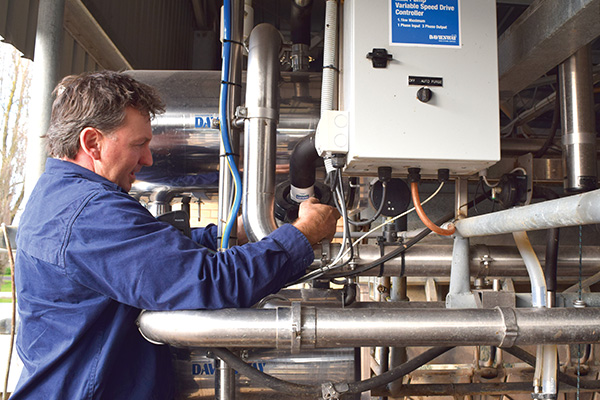
"But the impact on herd health, milk quality and production can be significantly affected when things aren't right. And it often costs more money to fix the problem than it would have done if the shed check had been done on time."
VACUUM LEVELS CAN COST MORE
One of the first offenders is vacuum level. Paul said these naturally change over time in every dairy, because of wear and tear.
“But, in the last 12 months, I’ve seen more variation in vacuum levels causing more problems than ever before, purely because the vacuum is too high or too low – which would have been picked up in a routine shed test,” Paul said.
CHANGE INFLATIONS EVERY 2500 MILKINGS
Changing the inflations or dairy liners every 2500 milkings is one of the first and most consistent pieces of advice any dairy technician worth their weight would offer, he said.
“Because the inflations are the contact point between the cow and the plant, they are the most important part of the process.”
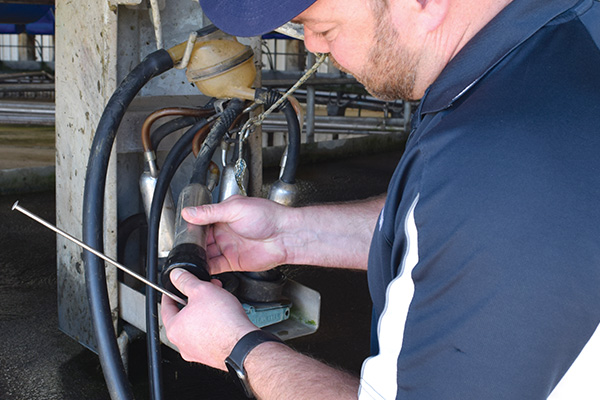
RTU SAFER TO USE IN WATER SHORTAGES
He also said decisions around teat sprays have been heightened this season because of the water shortage and subsequent quality-control issues.
The reality is that after the cups are removed, the teat orifice takes about three minutes to close. An effective teat spray is the first, second, third, and best barrier against pathogens during that window.
The most commonly used teat sprays in Australia are Iodophors (manufactured from naturally occurring iodine), Chlorhexidine (a man-made compound) and DDBSA (a man-made product).
He said the differences come down to personal choice, but his recommendation is a Ready-To-Use option – simply because of its consistency, high levels of emollient and world-standard drinking water used during manufacture.
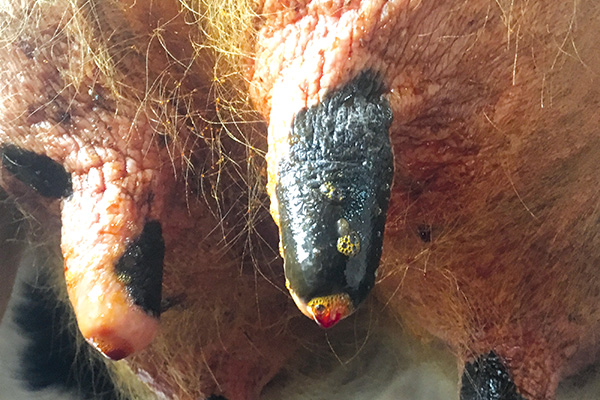
HYPERKERATOSIS
Teat-end hyperkeratosis is a thickening of the skin that lines the teat canal and surrounds the external teat orifice. Ensuring the teat skin is in good condition, maintaining skin moisture and natural elasticity, will help the teat restrict the development of hyperkeratosis. Using a high quality teat disinfectant and changing liners every 2500 milkings is essential for teat health.
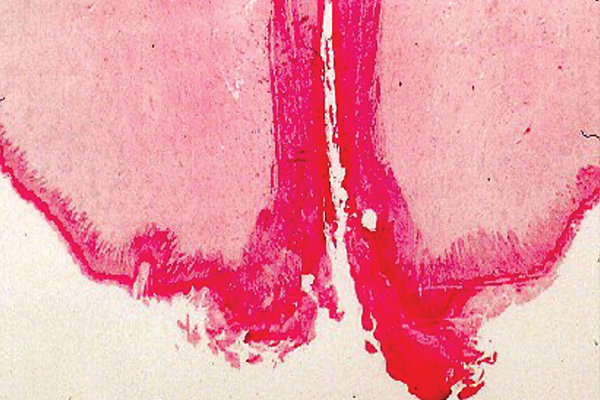
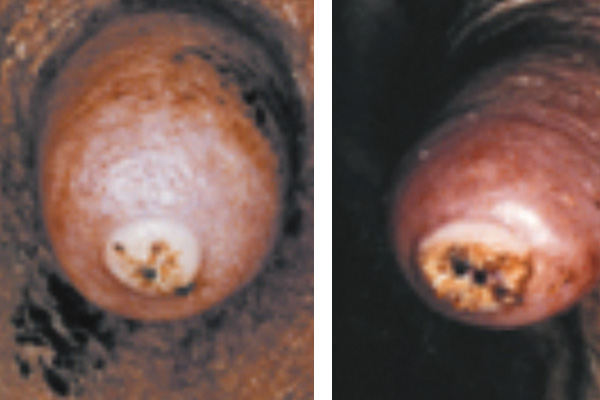
IODOPHORS THE YARD STICK
Using products derived from seawater and seaweed is well understood to control skin infections and injuries. This is because seawater includes both chlorine and iodine in sufficient quantities to promote healing and infection control. Seawater would be an ideal teat dip – except for the fact that the drying salt concentrates chlorine against skin, resulting in drying and cracking.
From a dairy farmer’s perspective, Paul said iodine is the only product that kills all bacteria in the same way at the same rate. However, emollient levels remain critical within that conversation for cow comfort.
“Iodine-based teat sprays cope better with poorer water as they are acidic and strong oxidants. Quality iodides are buffered to reduce the skin-irritation potential, and the right levels of emollient are important to stop irritating a cow’s teat,” Paul said.
“In saying that, iodine is the world-standard sanitiser and the chemical all other teat sprays are measured against.”
RTU SO EASY
Paul said the RTU Redene was a hard product to pass by.
“It’s always my preferred option, because the emollient levels are already elevated, the chemical is precisely measured, and the on-farm water quality is taken out of the equation all together,” he said.
“I just love that it’s such a consistent product, and you know that you’re right – every single time.”
CHLORHEXIDINE HAS ITS PLACE
Chlorhexidine is a man-made sanitiser with a neutral pH. It works by immobilising bacteria, stopping them from feeding, thus they die. It was developed in the 1960s because hospitals wanted a disinfectant that didn’t stain.
“It’s very gentle on the cow’s teats, but it doesn’t cope at all well with poor quality water,” Paul said. “There is some evidence that it isn’t as effective on some bacteria species, like Pseudomonas and Serratia, but, if you have town water, it’s a great option.”
DDBSA is a base chemical builder for a type of detergent. It works in a similar way to chlorhexidine, but, Paul said, is not as bullet-proof.
SUMMARY
Paul said there is no “one-size fits all” when it comes to dairies and he urged producers to take advantage of the skilled advice within the Daviesway/DASCO team to find the most effective option available.
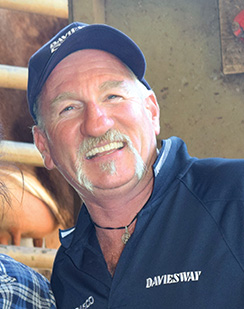
PAUL HURST DASCO
Chemical Hygiene Specialist
Paul graduated with a Bachelor of Science degree (Chemistry major) from Melbourne University in 1992. He has worked in the dairy hygiene space for 20 years –specialising in technical support, trouble-shooting, and protocol

